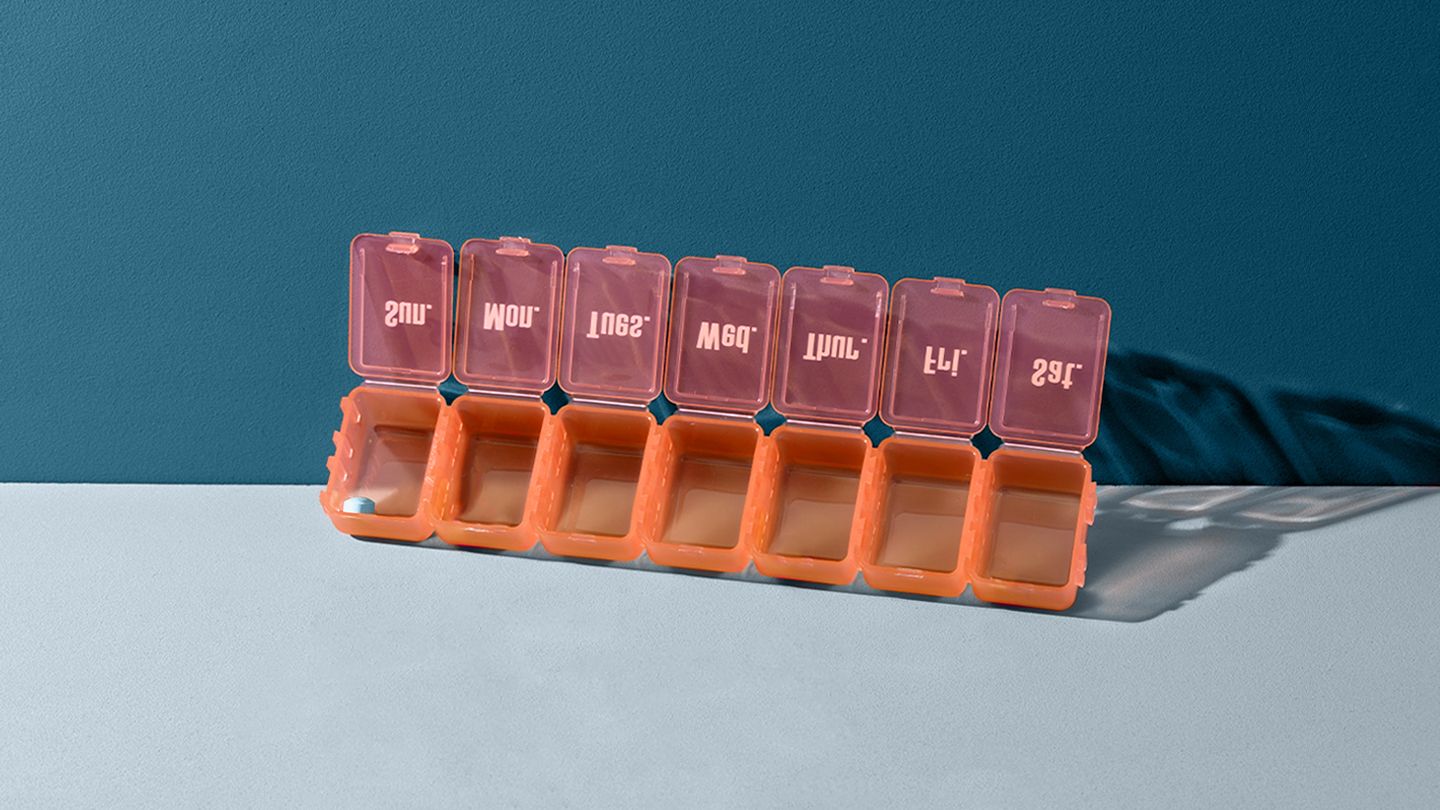Have you ever felt like your brain is running a marathon while your joints are taking a leisurely stroll? Or maybe you're constantly bouncing between high energy and complete exhaustion? You're not alone, and it's not all in your head.
There's something fascinating happening in the world of health research right now. Scientists are discovering that ADHD and hypermobility might be more connected than we ever imagined. It's like finding out two old friends have been secretly texting behind your back surprising, but it actually makes a lot of sense once you know what to look for.
So what exactly is going on here? Let's dive into this intriguing connection and explore what it means for you.
The Science Behind the Connection
Okay, let's get a bit nerdy for a moment but in the most approachable way possible. The link between ADHD and hypermobility might have something to do with our body's building blocks, literally. Some researchers believe that certain collagen differences the stuff that holds our bodies together might play a role in both joint flexibility and brain development.
Think of it this way: if your body's foundation material is a bit different, it could affect everything from how your joints move to how your brain processes information. It's like having a slightly different recipe for the same cake the end result looks similar, but there are subtle differences throughout.
A study published in research journals found interesting overlaps between people with hypermobility spectrum disorders and neurodevelopmental conditions like ADHD. The research suggests there might be shared underlying mechanisms, though scientists are still piecing together the complete puzzle.
What This Actually Feels Like
Let me paint you a picture of what this might look like in real life. Imagine Sarah, a 28-year-old graphic designer with ADHD. She's constantly tapping her feet, clicking her pen, and her mind is always racing with new ideas. But she also deals with mysterious aches and pains her ankles roll easily, she sprains her wrist for no reason, and sitting still actually hurts her joints.
Or consider 16-year-old Alex, who has trouble focusing in class and is always fidgeting. Sports were never his thing because his joints would pop out of place easily, and he'd come home exhausted despite not doing anything particularly strenuous.
Does any of this sound familiar? If so, you're definitely not alone in this experience.
| Symptom | How It Shows Up |
|---|---|
| Joint pain | Often mistaken as growing pains or fibromyalgia |
| Chronic fatigue | Despite having "high energy" from ADHD |
| Coordination problems | Clumsiness despite high activity levels |
| Low muscle tone | Leading to posture issues and discomfort |
Physical Challenges You Might Experience
Living with both conditions can sometimes feel like being a high-performance sports car with slightly wobbly wheels. You've got all this power and potential, but something feels just a bit off with the mechanics.
You might notice that you're more prone to injuries spraining an ankle just walking on flat ground, or dislocating a shoulder during what should be simple movements. Your joints might bend in ways that other people's don't, and while that might sound like a superpower, it can actually lead to instability and pain.
The fatigue is particularly tricky. You might have incredible energy bursts where you're tackling projects like a hurricane, but then crash hard. It's not just mental tiredness either there's a genuine physical component that makes everyday tasks feel like climbing mountains.
If you're wondering how to check for hypermobility, there's something called the Beighton Score a simple test that doctors use. It checks things like whether you can bend your pinky finger backward past 90 degrees, touch your thumb to your forearm, or hyperextend your elbows and knees. But we'll get into that more later.
Finding Relief Through Movement
Here's some really good news: there are movement practices that can actually help with both ADHD symptoms and hypermobility challenges. The key is finding activities that strengthen without overextending.
Pilates is like a gentle superhero workout. It focuses on core strength and proper alignment, which is perfect for supporting those hypermobile joints while giving your brain the movement it craves. Many people find the concentration required actually helps with focus too.
Tai Chi might look slow and gentle, but it's working on multiple levels. The flowing movements help with joint stability, while the mindful aspect can be incredibly grounding for busy ADHD minds.
Swimming is another excellent option. The water supports your joints while still providing resistance to build strength. Plus, the rhythmic nature of swimming can be almost meditative for many people with ADHD.
The important thing to remember is that every body is different. What works wonderfully for one person might not be right for another. Always check with healthcare professionals before starting new exercise routines, especially when dealing with joint concerns.
When to Talk to Your Doctor
So how do you know if what you're experiencing is related to hypermobility? Here are some red flags to watch for:
If you're constantly dealing with injuries that seem to happen with minimal trauma like spraining an ankle just walking, or developing tendonitis from simple tasks. Maybe you've always been told you're "double-jointed" or that you have particularly flexible joints. Or you might notice that you have trouble gauging your body's limits pushing too hard during exercise or not realizing you've injured yourself until later.
When you do talk to your healthcare provider, try using some of these conversation starters:
"I have ADHD, and I also feel like I dislocate too easily could that be connected?"
"I have a lot of joint pain maybe it's more than normal?"
"I'm always flexible, but sometimes it feels like my joints are unstable. Should we look into this?"
Remember, you know your body best. If something doesn't feel right, trust that instinct and advocate for yourself.
Managing Both Conditions Long-Term
Building a sustainable routine with both ADHD and hypermobility requires some creativity and self-compassion. It's not about doing everything perfectly it's about finding what works for you and sticking with it.
Start your day with some gentle warm-up stretches. Nothing intense just movements that wake up your body and prepare your joints for the day ahead. This might take five minutes or it might take twenty, depending on how you're feeling.
Fidget tools can be wonderful for focus, but consider choosing ones that don't strain your joints. Stress balls with the right amount of resistance, fidget spinners, or even simple finger exercises might work better than constant joint cracking or extreme movements.
Take regular movement breaks. Set timers for every 30 minutes to stand up, stretch, or do some gentle movement. This helps with both ADHD restlessness and joint stiffness.
Mindfulness practices can be incredibly helpful, but they don't have to mean sitting perfectly still. Walking meditation, mindful stretching, or even mindful cleaning can work better for hypermobile ADHD minds.
Creating Your Support System
One of the most important things you can do is remember that you don't have to figure this out alone. There are communities of people who understand what you're going through both online and in person.
Consider connecting with:
- Occupational therapists who specialize in both ADHD and hypermobility
- Physical therapists who understand the unique challenges of hypermobile joints
- Mental health professionals who can help with the emotional aspects of managing chronic conditions
- Support groups where you can share experiences and learn from others
It's also worth noting that sleep becomes even more crucial when you're managing multiple conditions. But we know that sleep with ADHD can be challenging! Try creating a bedtime routine that doesn't involve screens maybe reading, gentle stretching, or listening to calming music.
The Path Forward
Look, I want you to know something: figuring out that you have both ADHD and hypermobility can feel overwhelming at first. It might explain so many things you've been wondering about, but it can also feel like another layer of complexity in an already complicated life.
But here's what I've learned from talking to so many people who are navigating this: knowledge is power. Understanding what's happening in your body and brain gives you tools to work with it rather than against it.
You're not broken. You're not lazy. You're not making things up. You have two conditions that happen to dance together in a way that researchers are just beginning to understand.
And the beautiful thing? There are strategies, supports, and communities that can help you thrive. Whether it's finding the right movement practice, connecting with understanding healthcare providers, or simply knowing that there are others who get it you have options.
What might your next step look like? Maybe it's trying some gentle morning stretches this week. Perhaps it's writing down a few questions for your next doctor's appointment. Or maybe it's just giving yourself permission to be kinder to your body and brain today than you were yesterday.
Whatever feels right for you, know that you're not alone in this journey. The connection between ADHD and hypermobility is real, complex, and manageable. And you've already taken a wonderful step by learning about it.
What resonates most with your experience? Have you noticed patterns in your own life that line up with what we've discussed? I'd love to hear about your journey whether you're just starting to explore these connections or have been managing both conditions for years.
Remember, the goal isn't perfection. It's progress. It's understanding. It's finding ways to feel more comfortable in your own skin both literally and figuratively.
You've got this, and there are people and resources out there to help you along the way.
FAQs
What is the link between ADHD and hypermobility?
Research suggests that both conditions may share underlying connective‑tissue differences, such as variations in collagen, which can affect joint flexibility and brain development.
How can I tell if I have hypermobility alongside ADHD?
Common signs include frequent joint sprains, chronic joint pain, low muscle tone, and a high Beighton Score. If these symptoms appear with ADHD, a medical evaluation is advised.
Which exercises are safest for someone with both ADHD and hypermobility?
Low‑impact activities that strengthen stabilizing muscles without over‑stretching—like Pilates, Tai Chi, and swimming—are often recommended.
Can treating hypermobility improve my ADHD symptoms?
While not a cure, improving joint stability and reducing pain can lessen distraction and fatigue, which may help with focus and executive function.
What professionals should I consult for combined management?
Consider seeing a physiatrist or rheumatologist for hypermobility, an occupational therapist familiar with ADHD, and a mental‑health provider for coping strategies.
Disclaimer: This article is for informational purposes only and does not constitute medical advice. Always consult with a healthcare professional before starting any new treatment regimen.
Related Coverage
If struggling with focus, impulsivity or hyperactivity, meet with a skilled ADHD psychiatrist in Philadelphia for evaluation, testing, medications, therapies and coping strategies....
Pre-workout supplements may offer some benefits for ADHD but also have risks. Learn about using pre-workout supplements and other natural alternatives to manage ADHD symptoms....
Use pictures and images to teach children good behavior. Visual examples demonstrate positive conduct versus bad behavior. Learn tips for modeling behavior with visual aids....
Find out why ADHD and hypermobility often coexist, their shared symptoms, and practical tips to reduce pain and improve focus....
Concerta shortages due to increased ADHD demand leaves patients seeking options. Consider alternate stimulants, off-label meds, compounding, coupons, generics and behavior therapy until stabilized methylphenidate-ER shortage resolves....
Discover 50 tips to create a relaxing bedroom environment for adults with ADHD. Reduce clutter and stimulation, use calming scents and lighting for better sleep....
Magnesium for ADHD may boost focus, calm restlessness, and improve sleep. Learn safe dosages, benefits, risks, and top food sources....
Studies suggest artificial food dyes like Red Dye 40 may worsen ADHD and hyperactive behavior in some children with autism. Eliminating dyes may help reduce symptoms....
ADHD boredom can trigger irritability and risky impulses. Learn practical strategies, science‑backed insights, and when to seek help....
The ADHD stimulant shortage is affecting patients nationwide. Find out why it's happening and what you can do about it....









